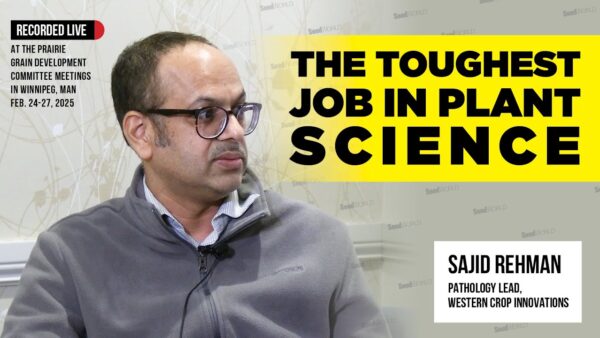After years of helping some of the world’s highest performing individuals reach their peak, Claire Dale and Patricia Peyton are on a mission to help bring understanding around “Physical Intelligence” — something entirely different from that cognitive intelligence and emotional intelligence.
Dale and Peyton, two of the faces behind of Companies in Motion, share that physical intelligence doesn’t just sit alongside cognitive and emotional intelligence, it underpins them. Physical intelligence, they say, enhances cognitive function and influences one’s ability to live happy, fulfilled, successful lives.
“Imagine a world where people are physically intelligent, where managing your own neurochemistry is commonplace and you do that through movement, right alongside your family, friends and colleagues — in a way that is as natural as switching on the computer,” they write.
Well you don’t have to imagine, companies are deploying these tactics in the workplace today. Coca-Cola is one of many companies using “physical intelligence” to enrich team development, but these principles can also be used to drive culture change, transform team performance and develop leadership and management.
Physical intelligence hinges on four factors:
Strength.
Posture, breathing, vocal and confidence-building exercises are critical to improving inner strength. This allows individuals to be more assertive, productive and independently minded.
Flexibility.
There are four chemicals that help you to adapt and connect better with others. They also enhance creativity and innovation.
Resilience.
Resilient people, those with “physical intelligence” respond to pressure, generate optimism and let go of failure.
Endurance.
You can stay motivated and determined using targeted techniques that increase energy and enable us to break through the pain barrier to achieve long-term goals.
Those in the seed industry are no stranger to change with all the mergers and acquisitions, but change can lead to uncertainty and stress. Couple this environment with the demand for innovation and the need to feed a growing global population amidst climate change and the challenges might seem insurmountable.
“The challenges in agriculture are getting more and more difficult, particularly with climate change,” says Liam Condon, president of Bayer Crop Science. “The growing population is limiting natural resources, land and water.
“We will need a lot more innovation. The food system is not on a sustainable trajectory. We have over 800 million people who go to bed hungry every night. We have another 2 billion who suffer from malnourishment. So half of the global population is not adequately being served by the current food system.”
Condon adds that production is still too resource intense.
“We’ve made great progress, but if we continue at the pace that we have in the past, this is not a sustainable trajectory,” he says. “Clearly we need a lot more innovation.”
Syngenta’s CEO Erik Fyrwald agrees.
“We have big challenges,” Fyrwald says. “First, we have to help farmers adapt to climate change. Think about what’s happened in the Midwest this year — the worst flooding in the history of the United States. At the same time, we have the worst drought in the history of Australia and the highest temperatures in France.”
To help those researchers, development teams and leaders focus on solutions to these challenges are eight key chemicals that influence thinking, feeling, speaking and overall behavior. Physical action/activity can influence the levels of these key chemicals: acetylcholine, adrenaline, cortisol, DHEA, dopamine, oxytocin, serotonin and testosterone.
Acetylcholine drives our ability to rebalance, renew and recover from pressure.
Adrenalin releases a burst of energy when we need it, but can also make our nerves kick in, making it difficult to communicate effectively.
Cortisol is critical to our ability to take on challenges. In today’s fast-paced world, it can send us into overdrive, triggering heightened anxiety.
DHEA is the high performance chemical, supporting vitality and cognitive function. It drops post-30 and is accelerated by stress which leads to premature aging.
Dopamine motivates, giving us feelings of pleasure and need. When we feel disappointment, it’s due to a lack of delivery of dopamine.
Oxytocin makes you feel safe and included. Too little and we feel isolated, too much and we feel overly dependent on relationships.
Serotonin influences our levels of happiness, satisfaction and well-being. High cortisol can drain our serotonin levels until depression sets in.
Testosterone drives our desire to achieve and compete. Too little can make us risk-adverse, too much can make us arrogant and underprepared.
How do these chemicals impact the 4 key elements?
As an example, Peyton says that endurance is about mental toughness, determination, perseverance and planning. It’s about having a strategy for sustaining effort during difficult times and maintaining peak performance for longer periods of time.
“Dopamine is a key chemical for endurance,” Peyton explains. “Dopamine levels drop when there is no reward in sight and you can’t see the light at the end of the tunnel.
“We need to be able to boost our own dopamine levels when things are difficult. Underlying levels of DHEA support endurance, as does the release of Beta endorphins — our natural pain killers.”
She says it is possible to train just as an athlete would to improve your endurance and tackle tough times.
Knowing how to control these chemicals could help you and others break barriers and move the needle in becoming a more sustainable food system.
Are you physically intelligent? Take the quiz.










